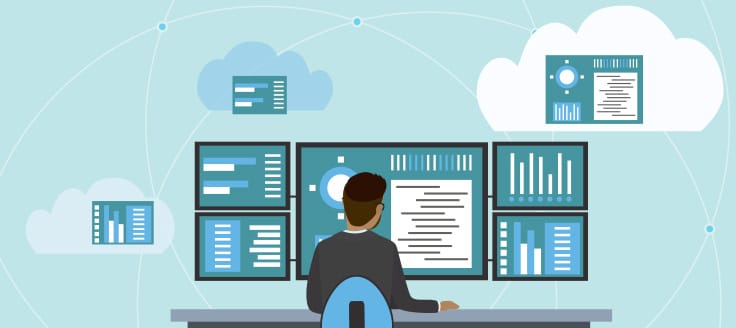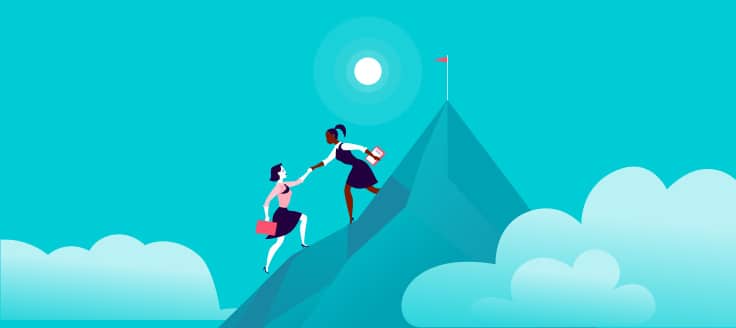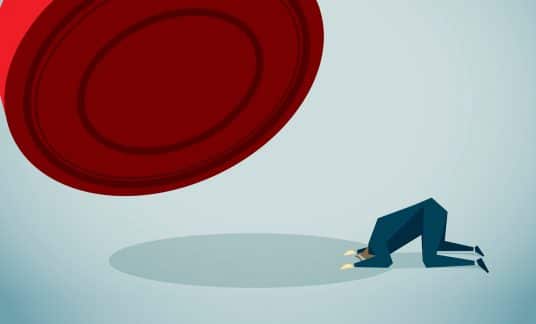As an entrepreneur, it’s essential to familiarize yourself with the concept of the business cycle.
This is an ever-changing, breathing economy and understanding it can help any size business improve.
Business Cycle Defined
So, what is the business cycle? The business cycle is sometimes also known as the economic cycle, the boom-bust cycle or the trade cycle. The business cycle definition “refers to the economic-wide fluctuation in production, trade and general economic activity,” according to Lumen Learning’s online business course materials. In other words, it’s the upward and downward change of the gross domestic product (GDP).
Lumen Learning goes on to explain that the business cycle “refers to the period of expansions and contractions in the level of economic activities (business fluctuations) around a long-term growth trend.”
The business cycle is a period between a boom and a collapse of the overall economy. It’s measured quarterly by the National Bureau of Economic Research (NBER).
The Phases of the Business Cycle
A deeper understanding of precisely what a business cycle is requires further knowledge of other key terms, such as the phases of a cycle, the trends, and what marks “ups” and “downs” in the economy.
Let’s take a look at its phases or stages that make up the changes in the economy. Those phases typically include expansion, peak, contraction and trough.
Expansion
Expansion is growth. In terms of the business cycle, the expansion phase is a time when things — including employment, production, output, wages and supplies of goods and services — are growing or moving in an upward pattern. If you imagine the business cycle as a plotted chart, the expansions would be the rise or uptick along the timeline, the growth of “a hill.”
Peak
When you climb a mountain, at some point you get to the top, or its peak. Similarly, the peak phase is the top of the business cycle. It is a time in which expansions have reached their peak.
The peaks are the highest plotted points. During these times, prices are at their limits. No further increases are seen in this phase.
Contraction
What goes up, must come down, according to Sir Issac Newton’s third law of motion. It’s also a key phrase to remember when considering the economy. Once growth has ceased, the change has nowhere to go but down.
In a graph, these changes would be the downward slopes or the backside of the “hill.” The contraction occurs after a peak has happened, and before the economy reaches a trough.
Lower employment rates denote the slides, goods and services begin to decline and overall, the economy starts to dip.
In the past, there are two terms economists have used to define such downward slips: recession and depression. Jon Nash, an economics and finance teacher with an MBA in finance, says the two are uniquely defined.
Recession
According to NBER, a recession is “a period of decline in total output, income, employment and trade, usually lasting six months to a year and marked by widespread contractions in many sectors of the economy.”
“A common rule of thumb for recession is two-quarters of negative GDP growth,” Nash said.
Depression
Depression is a recession — caused by the same factors — but it takes place over a much more extended period. Nash said depression is “marked by a significant decline in income and employment.”
“A common rule of thumb that some people use is a 10% decline in economic output as measured by the GDP,” said Nash.
While a recession can last several months to an entire year, it is unclear how long an economic depression can last.
Trough
If a peak phase is the very top of a “boom” or uptick in the economy, the trough is its opposite. The trough phase is the point in the economy when things are at their lowest. Incomes and spending are down. People cannot pay back loans. Thus, interest rates increase. The economy is at rock bottom; it’s a negative saturation point. The trough is the point demarcated by the bottom-most dot or “bottom of the valley” shape in the graph.
Once a trough is reached, there is nowhere to go but up. Meaning, following a trough, the economy will experience a new phase of expansion in the business cycle.
Recovery
Much like a person recovering from the flu, the economy must take some time to bounce back from the trough and contraction phases.
Recovery begins after a trough and before the economy is fully in a stage of expansion. Once there are steady growth levels, the economy’s business cycle comes to an end and begins again.
“Employment begins to rise and, due to accumulated cash balances with the bankers, lending also shows positive signals,” according to the Corporate Finance Institute. “In this phase, depreciated capital is replaced by producers, leading to new investments in the production process.”
Measuring the Business Cycle
Most business cycles are measured by monitoring the GDP. The GDP is a figure in U.S. dollars that is used to represent all of the completed goods and services in the borders of the country at any given time. Typically the GDP is measured for a year, with quarterly updates and analysis.
Financial professionals use the GDP to gauge how the country’s economy is faring. Are people spending more and earning more? Or are we low on products and late paying bills? These are all factors analysts use to determine the health of the market.
A quick search online will show you the current GDP, as well as recent trends. As it fluctuates daily, it is most easily tracked by marking quarters of the year.

How the Business Cycle Affects You
Businesses of all sizes should keep an eye on the market and overall health of the economy. The business cycle can help you determine where you need to apply changes to your business model and pricing strategy.
For example, if the economy is in an expansion phase, it’s good to know that your product or service might net a higher dollar. People are spending money, so it could be time to hire additional employees, expand that new idea or add another location. On the flip side, if the economy is in a contraction phase, you might want to be more careful with your dollars. Consider downsizing if necessary. In this phase, the public is not buying much, employment rates are down and interest rates are on the rise.
Keeping an eye on the business cycle also helps small business owners know when it’s smartest to take on new loans. In the contraction phase, people also aren’t spending as much money and unemployment is growing. Interest rates are way up during contraction, making it a bad time to borrow. Lenders see a higher risk that borrowers won’t repay their loans.
In an expansion, however, lenders will have lower interest rates because people are spending more and are less worried about the overall state of the economy. During these upswings, it’s a great time to tap into a loan. Lenders will be more competitive to get your business, meaning better rates and terms for you.
Watching the business cycle and having a finger on the pulse of such changes can help you make smart choices. Staying informed means you will be aware of good times and bad, and can better prepare yourself for the roller coaster. Times of recession won’t sneak up on you, and you can better prepare for it.












